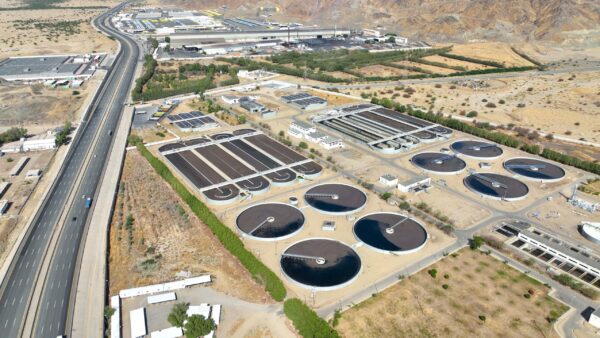

Certain parts of the world are prone to the fury of nature. Hurricanes frequently inundate the coasts and islands of the Caribbean. Fires, though critical to their biome, regularly ravage built-up regions in California. Magnitudinous earthquakes can disrupt the lives of those who dwell upon tectonic faults. But occasionally, a region finds itself stricken by a disaster somewhat unusual for its clime. Such was the case for New York in the fall of 2012 when the Empire State found itself facing Louisianan flooding as a result of Superstorm Sandy.
The immediate devastation was undeniable, especially in New York City. Billions of dollars in damages to the infrastructure of the Big Apple, thousands of homes in the city and surrounding neighborhoods rendered uninhabitable, and terrible loss of life were some of the obvious tragedies to arise in the wake of the storm. As quickly as the hurricane struck, resilient New Yorkers began to rebuild; yet, because of the tremendous size of this storm and the city’s vulnerability to such a weather event, recovery was a challenge.
It would be difficult to prepare any well-entrenched metropolis for such a storm, especially one which does not usually have to deal with such powerful hurricanes. But New York faced an unusually difficult circumstance with Hurricane Sandy. The Weather Channel’s Senior Meteorologist Stu Ostro said, prior to the storm: “A meteorologically mind-boggling combination of ingredients is coming together: one of the largest expanses of tropical storm (gale) force winds on record with a tropical or subtropical cyclone in the Atlantic or for that matter anywhere else in the world; a track of the center making a sharp left turn in direction of movement toward New Jersey in a way that is unprecedented in the historical database; a ‘warm-core’ tropical cyclone embedded within a larger, nor’easter-like circulation; and eventually tropical moisture and arctic air combining to produce heavy snow in interior high elevations.” It did not help that an actual nor’easter struck New York days after Sandy, complicating recovery efforts.
“New York deals with flooding. It’s surrounded by water and it has so much underground infrastructure. But we just don’t have to deal with hurricanes like they do in the southern coastal states,” says Hill International’s Project Director Suzanne Schwartz. Suzanne has nearly 15 years of experience providing contract-administration services on construction projects in New York. With that experience, she understands the city’s infrastructural capacity—as well as the usual weather. “For that reason I think it was really fortunate that professional project managers were hired to participate in the disaster-recovery initiatives after Sandy,” she says. “The construction contractors and government agencies in New York, fantastic as they are, just did not have the bandwidth to weather this storm alone.”
A key part of recovery is the reconstruction of utilities and industrial facilities. “These aren’t necessarily the pretty projects, but they bring a sense of continuity and normalcy to the communities they serve,” says Hill Vice President in New York George Keeber. After Sandy, George provided construction management on the reconstruction of a damaged facility for a public transit organization. In addition to supplying physical continuity to the lives of those impacted by the disaster, George and the rest of the team rebuilt the building to be more resilient in the future.
“This job included some efforts to mitigate the impacts of future storms,” says George. “We added sea walls a few feet above standards dictated by the National Hurricane Center’s Sea, Lake, and Overland Surges from Hurricanes model. We put stoplogs in front of the doors—these are basically I-beams that add extra flood protection at the openings of the building. And we put all the major control equipment upstairs so that it wouldn’t be destroyed in a future high-water situation.”
These are standard precautions against future flood and storm damage, but such precautions will make a difference when another storm hits. And just as importantly, standardized mitigation efforts are often necessarily incorporated into the designs of buildings funded by federal relief money. In the case of the facility George was working on, the money came from a two-pronged federal source for storm repairs and mitigation efforts. “We were able to help ensure that the project requirements of the client were met,” George says. “In doing so, we helped them secure the full funding needed to get the job done.”
Suzanne Schwartz says of the Sandy-rebuild funding: “New Yorkers always come together in times of crisis and, in general, New York was good about making funds available quickly enough for rapid recovery efforts to take place. In fact, the name of the city’s original residential restoration program was Rapid Repairs. That did a lot of good in terms of addressing the short-term damages and the immediate life-safety needs of the victims.” But very often in disaster situations, even the most rapid recovery programs do not seem to start rapidly or comprehensively enough.
A particular housing complex, a block away from the Atlantic Ocean in Rockaway Park, faced some of the most abrupt devastation as a result of Sandy. In this case, the condo owners’ association applied directly for Federal Emergency Management Agency (FEMA) funding to repair their homes immediately after the storm. The residents were unwilling to wait for assistance to fall to them; yet, FEMA funding was stretched thin in Sandy’s aftermath, so each repair dollar had to be won.
Hill Senior Project Manager Ian Parks supported these owners by providing oversight during inspections undertaken by insurance assessors. “We would walk with them,” says Ian, “and offer our own observations about the damages during the inspections.” This added pair of expert eyes provided a careful lens over subtle aspects of the damage and revealed things that might have otherwise gone unnoticed. This, in turn, made sure that more money was available to the owners for reconstruction.
Still, money was tight. Ian says: “It was a reconstruction in kind. There were no funds available, at that point, for careful mitigation efforts that might have been required in a larger reconstruction program.” Unlike the public transit facility enhanced with stoplogs and reconfigured control equipment, there was little foresight incorporated into this housing project. For instance, the team’s efforts helped to reconstruct the mechanical, electrical, and plumbing infrastructure; but these remained in the basements of the facilities, where they had been, and remained vulnerable to future storm damage.
“It’s hard for the homeowners to win in this kind of scenario,” admits Ian. But nevertheless, in the face of personal hardship and trauma, the project management professionals on the disaster recovery team were able to expedite the reconstruction process with a carefully designed construction schedule despite the limits of funding. “We moved along as quickly as we could to get residents home,” says Ian. “By splitting the project into multiple phases, we were able to design and bid interior reconstruction work while construction started on building exteriors. This went a long way in finishing the reconstruction and getting people home.”
In addition, Ian’s team helped the condo owners’ association successfully apply for a Small Business Association loan. This was a conduit for needed funding for the reconstruction. Despite any shortcomings of this particular recovery initiative, such as the lack of mitigation efforts, Ian reaffirms: “It was a success. Within the budget we could work with, we got the job done. And people were able to get back into their homes more quickly than was possible through some of the larger reconstruction efforts.”
Now having demonstrated the usefulness of the project management approach within a disaster recovery context, Hill International was awarded a contract to support a NYC disaster recovery program focused on the reconstruction of houses damaged by the storm. Suzanne Schwartz has participated in the project since Hill’s involvement began in 2014.
The program allocated federal money for New York residents whose homes were damaged by Sandy. Residents had several options for using their allocated monies. They might repair, rebuild, or get reimbursement for their damaged homes, depending on the scope of damages. The program resulted in approximately 12,500 families receiving housing assistance.
“Our work on this program was task based,” says Suzanne. “We stepped in as we were needed to support the needs of NYC agencies and the other organizations we were working with to help them meet the chief aims of the program—to get people back into their homes as quickly and safely as possible.” This is easier said than done. Coordinating and executing a widespread residential reconstruction program in the largest U.S. city proved a real challenge for the team.
In particular, it seemed difficult to spread awareness and get people on board with the program. “We might be working on a street to renovate a house and an equally affected house next door might be getting no repairs for whatever reason,” says Suzanne. “This difficulty demonstrates the utmost importance of effective public communications in disaster recovery scenarios.”
“An added difficulty was the staging. No matter where we were working, it was very tight.” New York City is a city of attached homes. To stage any kind of work on these houses is difficult—when the work included a necessary one-story elevation to mitigate future storm damages, the difficulty was compounded. “Our project management oversight was necessary to help facilitate the sequencing and staging of these tight projects quickly and within budget,” Suzanne continues. “It would be hard to coordinate such work without a bird’s-eye view of the program, which project management firms are more experienced providing.”
But finally, seven years after Sandy struck, there is light at the end of the tunnel for this residential recovery program. “Even now, we’re doing close out,” Suzanne says. “And the program will still be around for the foreseeable future to address any outstanding issue or follow-up needs. But the work is mostly done, at this point.”
Now, thousands of New Yorkers are back in their homes and many of those homes are more resilient than before.
When Sandy struck, another high-profile disaster-recovery project had been underway in NYC since early 2002. This faced compounded challenges because of the storm. A huge part of that recovery involved the construction of a highly complex transportation hub. Like the rest of the city’s underground transit system, this site suffered immensely from Sandy. Damage was worse since the hub remained unfinished at the time.
“We had to bounce back on the project very quickly,” says Hill’s Dereck Baker, who served as senior planner and scheduler on the project. “There were very ambitious stakeholder milestones established and the city had a very emotional relationship with this reconstruction.” And so a disaster-recovery project took place within a disaster-recovery project as Dereck and his team worked to quickly pump huge amounts of salt water from their active construction site and repair all the damaged equipment. They worked efficiently and with great effort to help meet deadlines for their primary disaster-recovery project.
Achieving the disaster-recovery goals after Sandy was of symbolic importance to the city. The residents emerged together from the receding tide. The resilience that professionals, such as Dereck, Suzanne, Ian, and George, showed in the face of intense storm damages on projects throughout the city demonstrates their commitments to excellence and their abilities to effect success using a project management approach on difficult and emotionally painful jobs. Yet even more impressive is the resilience shown by the inhabitants of New York City who persevered through the deadly hurricane of 2012 and continue to persevere on their long road to recovery.
Especially as the climate changes, coastal regions around the world will remain some of the most vulnerable to disaster. It is important to have forward-thinking plans in preparation for natural disasters which will continue to be a part of our reality. In addition to rapid decisions from local governments and the acquisition of enough funding, the project management approach can help effect quicker and more cost efficient success on disaster recovery initiatives.
In the process of becoming the global leader in managing construction risk, Hill International, Inc. has learned how to mitigate potential risks in construction endeavors, prolong the lives of our projects, and enhance the safety of all their intended occupants. Drawing upon that extensive knowledge, Hill’s professionals are able to quickly address the painful task of rebuilding when disasters strike. To speak with a Hill professional about your own disaster-recovery plans, reach out to Senior Vice President & Regional Manager for Southeast U.S. & Latin America Luis Lugo at (786) 423-7982 or send him an email [email protected]. To learn more about Hill International, please visit www.hillintl.com.
Share

June 23, 2025 | Articles
Jeffrey Hurley Joins Hill’s Northern California Rail Practice

June 23, 2025 | Articles
Ready, Set, Grow: First VP Chad Koelling Takes Charge of Hill’s Mountain West Region

June 8, 2025 | Articles
PMO in Saudi Arabia: The Holistic Approach to Realizing a National Mega-Portfolio

June 1, 2025 | Articles

May 26, 2025 | Articles

May 12, 2025 | Articles
Keeping Your Water/Wastewater Programs Flowing with Public Relations

April 27, 2025 | Articles
Oiling the Machine: Steps to Successful Permitting on Infrastructure Megaprojects

April 20, 2025 | Articles
Sustainable Scaling: Solutions for Managing Risk on Europe’s Data Center Projects